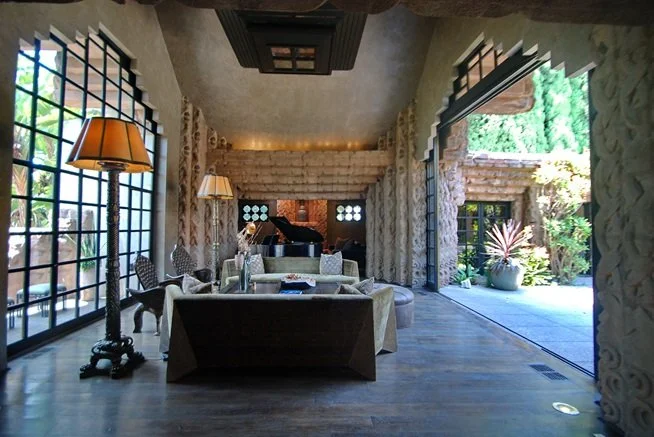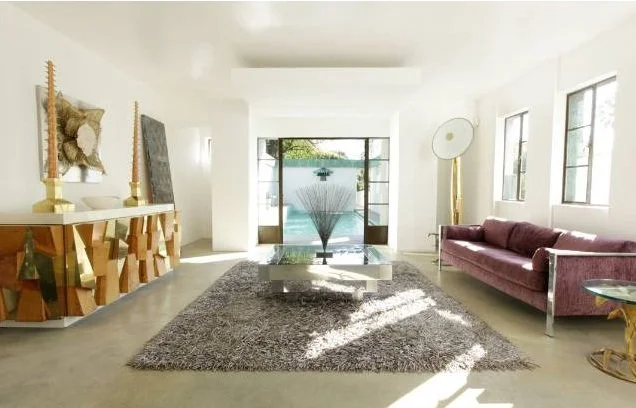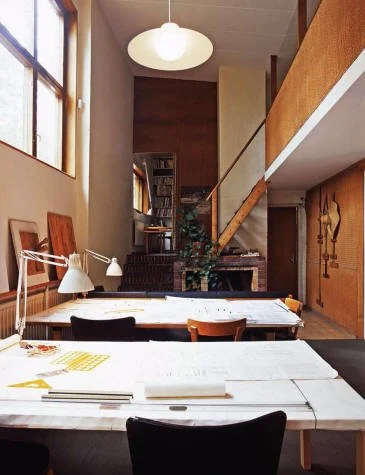US Modernist architecture and Biophilic Design share a philosophical alignment, both fundamentally committed to creating human-centric spaces that celebrate our intrinsic connection to nature. By prioritising natural light, material authenticity, and design that responds to human behavioural patterns, these approaches transform buildings from mere shelters into living, breathing environments.
Frank Lloyd Wright Architect. The John (Jack) and Ruth Sowden House, Los Angeles CA.
Architects like Frank Lloyd Wright and Richard Neutra were pioneering biophilia decades before the term existed as a design principle, strategically integrating large windows, natural materials, and designs that blur indoor-outdoor boundaries. Their work demonstrates that truly great architecture isn't about imposing human structures on the landscape, but about creating harmonious spaces that enhance human well-being by maintaining a deep, sensory dialogue with the natural world. This shared vision sees buildings not as static objects, but as dynamic systems that support physical, psychological, and emotional health through thoughtful, nature-inspired design.
What if your home could be more than just a container for living? What if it could enhance your wellbeing, sync with natural rhythms, and make you feel truly alive?
Frank Lloyd Wright Architect. Louis Samuel House, aka the Samuel-Novarro House
Imagine a house that breathes with the landscape, where windows frame nature like living paintings and every design choice connects you to the world outside We speak with George Smart, founder of US Modernist the award-winning archive and podcast dedicated to preserving and celebrating Modernist design.
We chat about Frank Lloyd Wright’s iconic Fallingwater house perched over a waterfall and how architect Richard Neutra would spend entire weekends with families, observing their daily routines to design homes that perfectly supported their lifestyle. We also explore how technological innovations like air conditioning and steel construction opened up radical new possibilities for design.
Technology played a crucial role in the US Modernist movement. The advent of air conditioning, steel construction, and large glass panels allowed architects to create open, light-filled spaces that blurred indoor and outdoor boundaries. California, with its stunning landscapes and consistent climate, became a laboratory for these experimental designs.
For anyone curious about design, architecture, or how our surroundings impact our wellbeing, this episode is a must-listen. Tune in, get inspired, and discover how great design can transform our connection to the world around us.
Want to dive deeper? Visit US Modernist's website or check out their podcast for more architectural adventures.
Photos Gallery of 4 photos; Aalto architect, The Alvar and Aino Aalto House, Munkkiniemi, Helsinki, Finland. Frank Lloyd Wright The John (Jack) and Ruth Sowden House, Los Angeles CA.; Frank Lloyd Wright Louis Samuel House, aka the Samuel-Novarro House.
Have you got a copy of the Journal? You can now subscribe as a member of the Journal of Biophilic Design or purchase a gorgeous coffee table reference copy or PDF download of the Journal journalofbiophilicdesign.comor Amazon and Kindle.
Book tickets and join us in PERSON and LIVE STREAMED Biophilic Design Conference www.biophilicdesignconference.com
Credits: with thanks to George Harvey Audio Production for the calming biophilic soundscape that backs all of our podcasts.
Listen to our podcast on Audible, Amazon Music, Spotify, iTunes, YouTube and all the RSS feeds.
https://www.facebook.com/journalofbiophilicdesign/
https://twitter.com/JofBiophilicDsn
https://www.linkedin.com/company/journalofbiophilicdesign/
https://www.instagram.com/journalofbiophilicdesign
If you like this,please subscribe!





